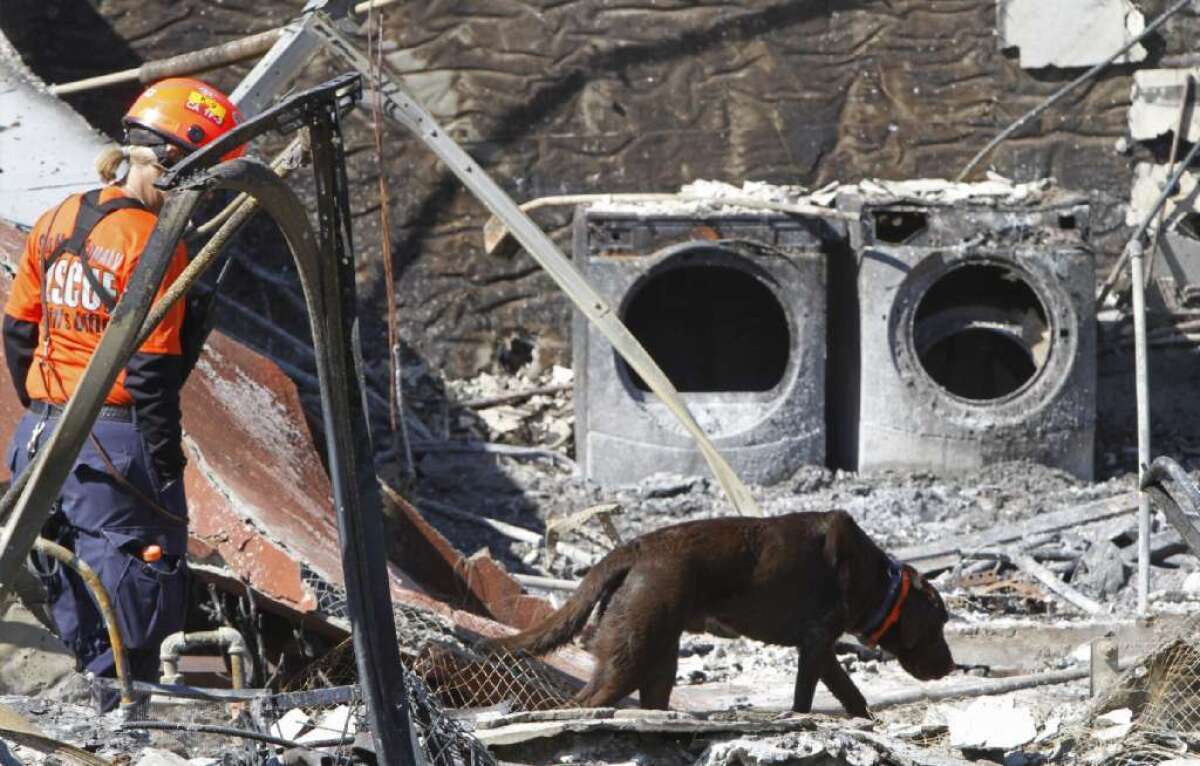What it takes to get action against a corporate wrongdoer: 8 deaths

- Share via
On Sept. 9, 2010, years of lax maintenance by Pacific Gas & Electric Co. announced itself by leveling a neighborhood in San Bruno, just south of the San Francisco city line. Eight people were killed in the gas pipeline blast; 58 others were injured, and 38 homes were destroyed.
You can take that as the baseline case for what it takes to get the federal government’s attention. Earlier this week, federal prosecutors in San Francisco unveiled a 12-count felony indictment of the company for knowingly violating federal pipeline safety laws. The maximum fine for the charges would be $6 million, but that’s only the start. The California Public Utilities Commission is pondering a penalty of as much as $2.25 billion, including the cost of pipeline upgrades that would have to be charged to shareholders, not ratepayers.
PG&E’s behavior before the blast and its response to the explosion thereafter should cement its reputation as one of California’s most detestable corporate citizens. The record is a long one. It dates back to 1956, when the utility allowed the installation of a substandard pipeline with a visible flaw, according to an investigation by National Transportation Safety Board.
The NTSB further established that after the blast, PG&E failed to stop the flow of gas for 95 minutes, which increased the damage and showed that its emergency planning and management were utterly deficient.
What was PG&E doing when it should have been examining its pipeline infrastructure and paying for safety improvements? For one thing, it was squandering more than $45 million to pass Proposition 16, a contemptible 2010 ballot measure PG&E cooked up in an effort to hobble municipal power agencies that would compete for its customers. The measure failed; money not well spent.
The company has fought the PUC at every turn in the proceedings over the recommended state penalty. That’s its right, of course, but the utility has stepped over the line: Last September, an administrative law judge ordered it to withdraw its claim about the possible cost to ratepayers of that stiff $2.25-billion penalty. PG&E said it would have to raise equity in a public offering to cover the sum, and that it would deserve higher rates as a result.
As a PUC financial study found, however, the company wouldn’t have to sell shares; it could simply cut or eliminate the dividend on its common stock, which came to $782 million last year. In fact, the analysis found, that would be “the lowest cost option to raise capital” to fund the penalty. PG&E’s claim that it would have to sell stock was “misleading,” the study said.
So too is its claim that a $2.25-billion penalty would force it into bankruptcy. The financial analysis found that the company is fully up to the challenge of raising that money, especially because the sum would be tax-deductible and about half of it would be credited back to the company for prior safety upgrades.
The company continues to refer to what happened in San Bruno as an “accident,” as though it was unavoidable and an act of God. It was the result of the same eminently avoidable human qualities that have guided PG&E’s performance in many ways over the years: greed, indifference, and stupidity. Let the shareholders pay the price.
More to Read
Sign up for Essential California
The most important California stories and recommendations in your inbox every morning.
You may occasionally receive promotional content from the Los Angeles Times.














